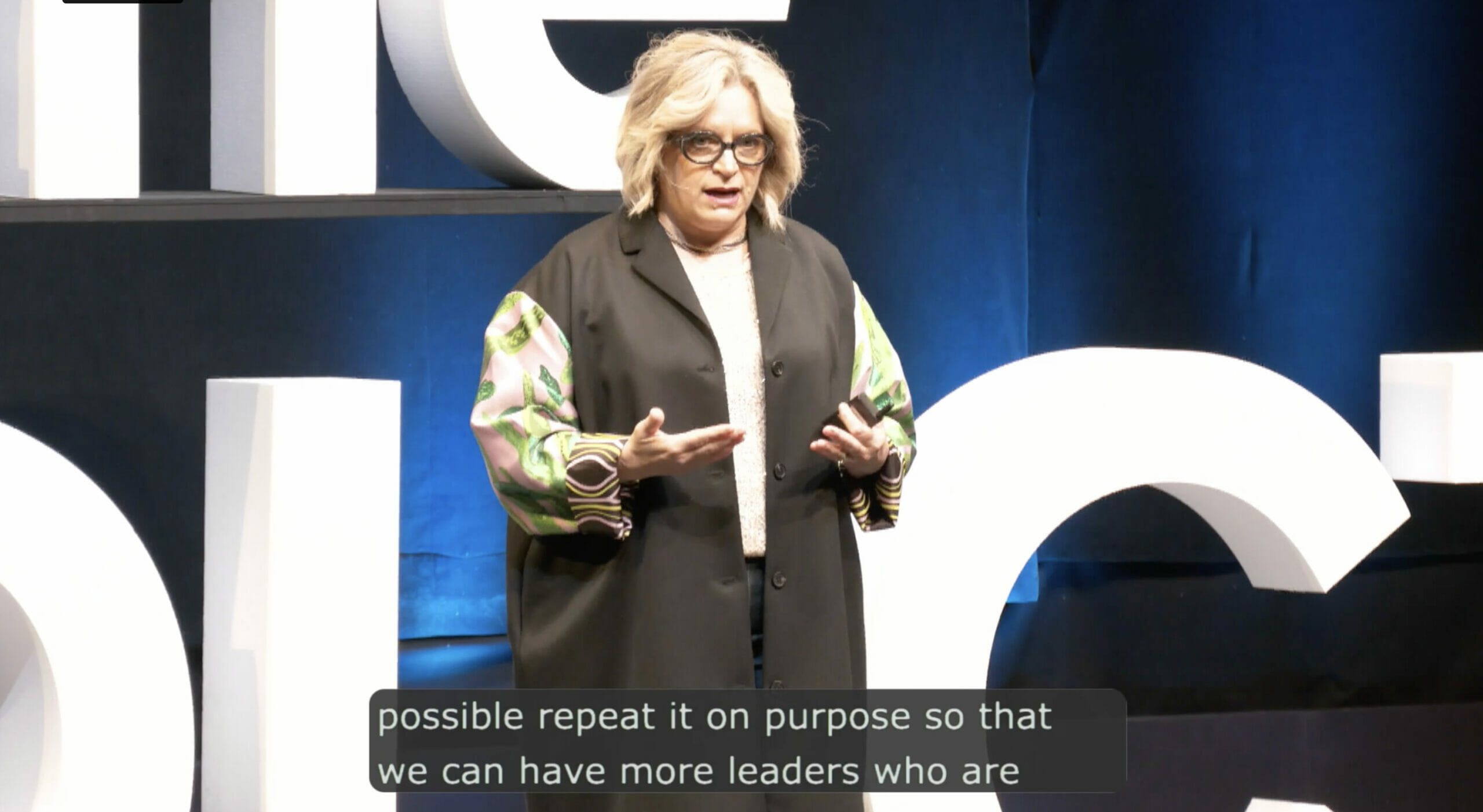Little in a company is more important than the successful transition to a leadership role — make good decisions as a senior leader and you’ll positively impact the business. Make bad decisions and your influence on the organisation will surely hit a bum note. But transition to product leadership isn’t always easy.
McKinsey posits that 50% of leadership transitions fail. In fact, it’s a transition that some consider more challenging than dealing with the trauma of divorce, bereavement or serious health issues. When leaders struggle through a transition, the performance of their direct reports is 15% lower than it would be with high-performing leaders. The direct reports are also 20% more likely to be disengaged or to leave the organisation.
So what’s the secret to success?
In this article we explore the experience of people who’ve successfully made the transition to a product leadership role and share 7 top tips for product, engineering, and design people who are transitioning to product leadership.
What’s attractive about product leadership?
If it’s a big deal for a business, the transition to leadership is probably the most difficult one for a product person to make. It means moving away from the day-to-day problems you’re used to solving and instead having to grapple with a new set of issues — big decisions about strategy, people management, and empowerment.
Daniel Elizalde, a product leadership coach who has held executive positions at Ericsson and Stem, says he loves the ability to take a step back to get the big picture and the business perspective that product leadership gives him. It’s about having a seat at the table: “Being a product leader means being closer to where the decisions are really made, and being able to work at a strategic level with the company. I’ve always really liked that,” he says.
This is also much of the appeal for the other product leaders we spoke to. Ellen Chisa, for example, Co-founder of Dark, says she got to a stage where the step to leadership was a natural one. She also loves the opportunity to teach and mentor that being a product leader gives her.
Product leadership also means a responsibility to make money for the company. Product managers may be measured on the experience of the user, but product leaders are measured on the return they bring. Daniel comments that a lot of product management advice talks about building products that customers love — what he calls “the fluffy stuff — but first and foremost a product leader needs to be a business person. “I see many PMs just ‘building products customers love’ with no regard for margins, business models, partnerships, positioning and so on. Often that approach backfires, especially in a B2B setting, because these PMs invest too much time and effort in the experience of one user type without understanding how they’ll monetise that investment or how that supports their company’s overall business strategy. As a product leader, you have to grow into that mindset so you can drive value,” he says.
The blurring between the disciplines of UX, design and business — the product management Venn diagram — becomes more pronounced the more senior you are. Christian Crumlish, a consultant who founded Design in Product and runs a community forum that discusses the overlap between design and product, also comments that much of the tension and concerns between disciplines disappears at a leadership level, but that product leaders need to be well-versed in adjacent disciplines. “I’m rusty as a practising designer, but I can art-direct a designer,” he says. “I can talk architecture to an engineer, and profit and loss with a business leader.” A product manager’s skill in finding consensus and getting people rallied around a vision is one that scales up to a leadership role.
He adds that leaders are usually recognised before they’re anointed: “The people you think about promoting will already be demonstrating leadership,” he says.
Product leadership also requires what the management books call “executive presence”, defined by Forbes as the ability to project gravitas — confidence, poise under pressure and decisiveness. It’s an attribute that comes more quickly and easily to some. There are many articles on cultivating executive presence and leadership by influence — this article, 5 Core Strategies for Cultivating Executive Presence and this article Developing Executive Presence are good starting points.

Product leadership — it’s not for everyone
One of product’s top mantras in the last couple of years is that “product leadership is hard”. In this blog post, Marty Cagan sets out some of the reasons for this, and comments that product leaders are “usually in a state of shock for a while, as they digest just how far away their current role is from where they need to be, and they start to realize the central role they need to play”.
Ellen Chisa comments that anyone considering product leadership should remember that they will have to give away a lot of the things they probably found fun. She says: “You may think that once you get product leadership, you’ll have more say over what the product is, but in fact you tend to have less say at a detailed level.”
Daniel counsels anyone trying to move to a leadership role should be honest about their strengths. People may think that leadership should be part of the natural evolution of their career, but he says “you have to go where your strengths are”. He says: “You have to understand what the role really entails — it’s about driving the organisation to achieve the strategic goals. So it’s not necessarily about being Steve Jobs who comes up with great ideas. It’s a lot of politics, org structure, training and skills, so that your teams can do good work.” You don’t need to choose a leadership path, he says.”If you choose to stay an individual contributor you don’t necessarily miss out on the money — although it’s true that, in a larger organisation, the higher you go, the more money you’ll make.”
Real-life experience
Karen Wei is senior manager of product management at US B2B fintech Wex, a business that employs nearly 5,000 people in 11 countries around the world. After a computer science degree she spent a short time as a developer before moving into product management. She joined Wex about two and a half years ago as a product manager with responsibility for its payments platform.
She says: “I hadn’t anticipated that one day I would become a manager, but I noticed over time that my mindset was shifting from ‘how can I grow individually?’ to ‘how can we be better product managers?’. I was thinking about how my peers in product management could also take the next step as well as how I could enable other functions to become more ‘product mindful’ about what we’re building. So it was a mindset shift, and I started noticing my questions were not really focused around me anymore.”
Karen characterises Wex as being midway through the transition from a sales-led to a product-led organisation, helpful in enabling her to see an opportunity for change. She says: “Had I joined a company that was already 100% product-centric, I may have not been able to see the opportunity of change.” She was also fortunate to have had a manager who spotted that her thinking was changing. “He spotted I had a portfolio of change proposals, product pitches, team presentations, organisational proposals and the like and asked me if I’d ever considered being a manager as part of my career.”
It took a while for me to realise that my product is actually my team. And the value that they deliver is what I contribute to the businessKaren Wei, Senior Manager of Product Management, Wex
Now Karen oversees the entire platform and has five product managers who report directly to her, but her transition hasn’t been anxiety free. Initially she felt like all the work was being done by her team and their peers.“In the first month or two I felt I was no longer providing value to anyone,” she says. “It was hard. When you’re an individual contributor, your value is very clear — you work on your product, you deliver that product, you bring value to your customers, and that’s the value you bring to the company.”
She adds: “It took a while for me to realise that my product is actually my team. And the value that they deliver is what I contribute to the business. But it took mentoring and coaching with other managers for me to get here.”
Karen says she always comes back to Cialdini’s six pillars of influence — reciprocity, commitment/consistency, social proof, liking, scarcity and authority — but she’s found that the authority she now has as a product leader hasn’t automatically given her more influence and she still very much leans on the first five. “I don’t like leaning on the authority,” she says, “it’s the least intuitive for me, but I recognise that I sometimes need to use it.”
Her communication skills have grown stronger as a product leader, she says. While product managers need to be strong communicators, she says she’s now learned to communicate in a way that nudges people in the right direction without being overbearing about her opinions on the way forward. “It’s all about influencing without the bias of my opinion on what the product should look like,” she says.
Transitioning to leadership from UX design
Ha Phan had about 20 years of experience in UX design (she was a principal UX designer at GoPro and has 10 patents to her name) and moved into product management about four years ago. She’s currently Director of the discovery platform at online education business Pluralsight, overseeing more than 20 staff, and with responsibility for the platform’s strategy, vision, and roadmap.
Her time at GoPro was really instructive, she says, as it was there that she really learned how to address and conduct empirical research. She says: “When you work on next-gen products, there’s really no way for you to use established tools like prototypes on Figma, because the mental model, or the product, doesn’t exist. You’re forced to think outside the box, and really flex your empirical reasoning muscles.”
This experience, and working with an R&D engineering team, made her rethink her career. Although she thought of herself as a UX practitioner, she was acting product manager for GoPro’s storytelling initiative when she left the company. She says: “That came to be because nobody understood the guiding principles of how we made decisions better than me. I would attend product meetings and inform the roadmap based on my own thinking. But in my mind, I was still thinking I was a UX person trying to influence Product.”
Ha Phan says she had bold ideas and her experience at GoPro taught her how to get stakeholders on side and get her ideas on the roadmap. “You learn to figure it out when you’re in the game,” she says, “I didn’t think what I was doing was anything big, I just thought it was something I had to do.”
She applied for a job as a UX designer at Pluralsight, but at interview was asked why she wasn’t applying to be a product manager. “I didn’t really think about roles because I’d worked at startups and just did what was needed,” she says, “my motivation is always that I have an idea, I have a solution to the problem, and I want to explore it, I want to make it real.” The other thing that had put her off thinking of herself as a product person, she says, is that product management means different things to different people. But when the hiring managers at Pluralsight suggested product management would be a suitable role for her, it all made sense.
She thinks that product managers have more clout than UX designers. She explains: “A product manager is seen as the person who owns the product. And when you have more responsibility or accountability, you automatically get more clout, whether it’s perceived, or real. I also think you have more clout when you are closer to the money.”
Ha joined Pluralsight as product manager for AI. After some research she came to understand that the company didn’t have a clear data strategy, and “you can’t have any kind of AI perspective without a clear data strategy”. She was ahead of the other product managers at the business on this, she says, because she’d done enough work with the machine learning engineers at GoPro to understand the importance of data excellence.
“I realised that no one was working on the search,” she says. “So much of the user journey starts with search. And I understood from the way that the company was scaling that the search couldn’t scale.” She started working on the search function and then spent about six months lobbying for a team to work with her. “Then I kept fighting for that team, I kept asking for resources and pushing our vision and celebrating every win we had.”
As a leader you’re expected to model values, to scale process, to build alignment — the kind of stuff you shun as an innovatorHa Phan, Director of Product, Pluralsight
When a company reorganisation came round, Ha pushed for a director role. She says: “Search did not have a voice. We didn’t have a seat at the table, and I wanted to sit at the table so I could fight for my team. I wanted to make sure that our perspective was known and that we would get the machine learning engineers we need, because so much of our ability to grow comes from making the search powerful. We needed the right kind of talent.” She recognises that her director role has given her much more influence in the organisation, but she has found some aspects of leadership hard, however. She says that, as an individual contributor, she was always very good at being a change agent and going rogue. “I could come in, learn what I wanted to learn and then move on. So it’s been harder for me to see myself as a leader. As a leader you’re expected to model values, to scale process, to build alignment — the kind of stuff you shun as an innovator.”
Advice and tips
How can you prepare yourself for leadership and what can you expect as a first-time product leader? Anyone taking on such a big responsibility can get overwhelmed, no matter how much confidence and self-belief they may have, and so here is some sensible advice from a few of those who’ve been there already.
1. Remember what’s important and let go of your individual contributor work
Ellen Chisa became a product leader because she was the first person who worked on the product at a startup. “When we started, it was just me. And then there were about 10 of us, and then very suddenly, there were about 50 of us.” Her counsel for product leaders in small companies — and therefore doing whatever is required — is that they should remember what’s important.
“When it gets to be too much work for one person, ask what parts of the product work can go or not go. I think it’s very tempting to let the leadership work go and not have a very good strategy, because you feel ‘things are on fire, I need to deal with these tickets’.”
Remember the job is high level and that none of the other activities matter if the goal is wrong. Says Ellen: “The most common problem I think for product leaders is that they don’t let go of their individual contributor work.”
2. You will need to define your role
Ellen says she always imagined that as the product leader, she would have this great sense of everything that was happening with the product. “This is not what happens at all. Instead, there are about four other people who are all over everything.”
It’s unlikely the CEO was a product leader so anyone stepping into product leadership will need to define their role. Says Ellen: “Usually your boss can tell you what to do, but for product leadership you’ll find you have to explain the reasons for the way you do things and what can be expected of you.”
3. Build relationships with the executive team first
A well functioning executive team is one of the most important things a company can have. Building executive presence is important. In an executive team meeting, you have the most valuable, highest paid people in the company and you have to be sensitive to this. Says Ellen: “You learn to read the room as a product manager, but this is reading a different room.”
4. Remember your team is your product
Ha Phan says that one of her former managers used to tell her ‘build an island of greatness and the rest will follow’ and that’s what she’s tried to do at Pluralsight. Everyone wants to join something good, she says, but building something new is also attractive for people because you’ve created a structure or framework that they can attach and add to. “The reason I’m successful as a leader is partially due to my team,” says Ha. “Pluralsight focuses on healthy teams. Psychological safety is paramount in a healthy team, no one is afraid to speak their mind. You need a certain number of people on the team to foster psychological safety. If you’re stretched too thin, you’re not going to build a good product.”
She adds there are tactical things that you should do as a leader to set up people for success. “One of the first things we do when we spin up a new team is build a team charter. This is our agreement on our values and how we work together, because if you have good norms, you build trust over time. I believe in being an advocate for my team, in building psychological safety, I just really care about everybody in my team. I think that we are able to build a really good product because of me. One of the surprising things — that I didn’t expect about being a leader — was that I became a better person.”
5. Set yourself goals from day one
Karen Wei comments that people who are newly transitioning to leadership make goals for their team, but they commonly miss setting goals for themselves. She says: “As how you as a new manager want to grow. What are the success criteria you want to set for yourself by the end of the year? What do you want to have accomplished in six months, in 12 months?.”
6. To understand how a company makes money, set up your own business
A head of product must be accountable and make sure that what is built makes a return for the business. Daniel Elizalde says that although he has worked in startups and large corporations, running his own business helped him hugely with this. He advises product managers to start their own business, just as a side hustle, and see what it’s like to be in the driving seat. “See what it’s really like to own the full P&L and live with the consequences of your decisions.”
He says: “It doesn’t have to be the next robotics startup in Silicon Valley. You can create a website that sells something, or create a course and teach it. In my business as a coach, I’m 100% responsible for everything in my small company. I have my products, which are my training courses. I am my own Head of Product, I have to understand my customers, design the products, build them, launch them.” The experience has helped him understand that it doesn’t matter what he does with a product if it is no good. ”If the product is not solving the customer’s pain, then the customer won’t buy it. And if the customer won’t buy it, you won’t have any money and you’ll go bankrupt. A lot of people in bigger companies are sheltered from that reality.”
7. Map out the official and unofficial relationships between peer disciplines
Christian Crumlish says that under the cover of getting up to speed with a new job you should assess your adjacent colleagues’ relationships with each other. “Are those relationships what they appear to be on the org chart? Is that the way things actually work? If you do that kind of survey of your adjacent colleagues you can identify areas that potentially aren’t clear and put them on the agenda.” It’s not about imposing your vision, more about putting yourself in the best position for negotiation, he says.
More on Product leadership
Read more articles on Product Leadership or, for more content on a wide range of product management topics, explore our Content A-Z.







Comments
Join the community
Sign up for free to share your thoughts